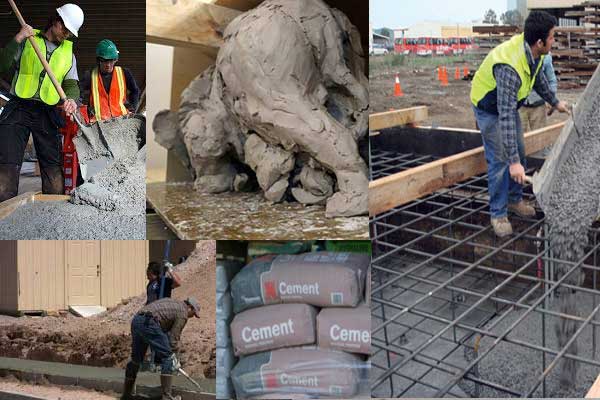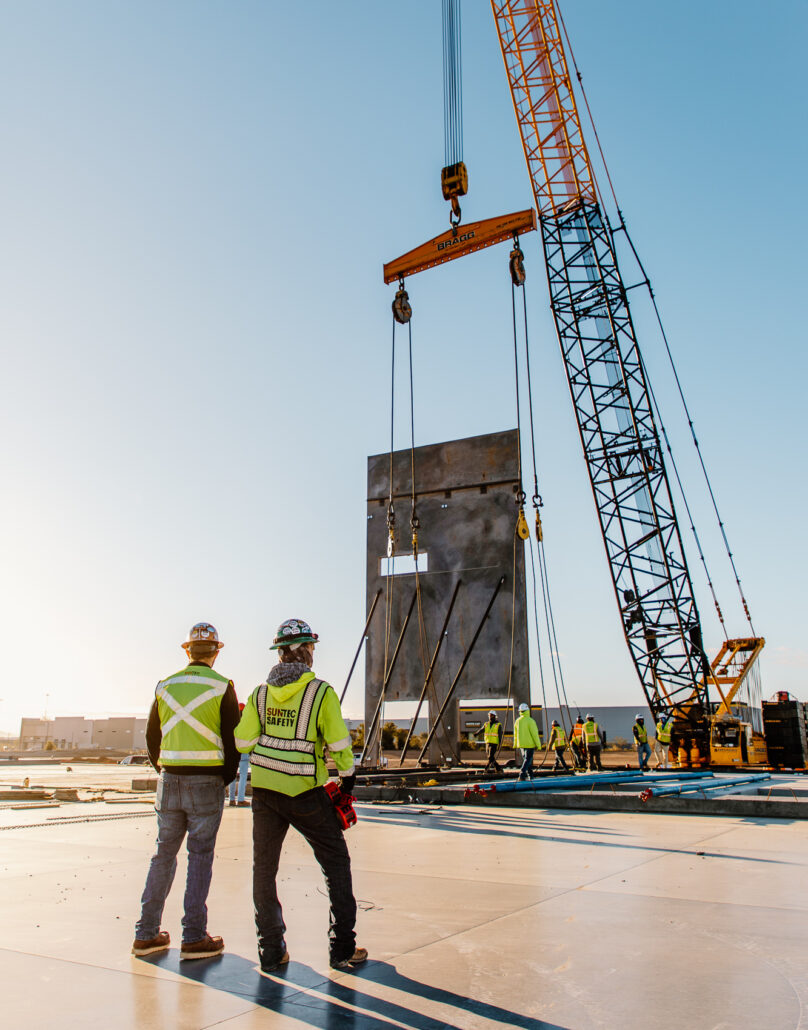Why West Coast General Engineering commercial concrete is the Best Choice for Tough Construction Environments
Why West Coast General Engineering commercial concrete is the Best Choice for Tough Construction Environments
Blog Article
The Crucial Duty of Concrete Structure in Structural Honesty and Long Life
When it pertains to constructing a residential or commercial property, the structure is extra important than you might believe. Concrete structures supply unequaled stamina and toughness, guaranteeing your framework can withstand numerous ecological obstacles. Without a solid base, you risk possible issues like shifting or fracturing, which can endanger safety and worth. Understanding the subtleties of concrete foundations might be the trick to maintaining your financial investment for several years to find. So, what should you consider next?
Comprehending the Value of Concrete Foundations
Concrete structures are crucial to the total stability of any type of structure, as they give the important assistance required to hold up against numerous tons and environmental conditions. When you think concerning building a home or a commercial room, the foundation is the first thing you should take into consideration. It works as a barrier versus moisture, protecting your building from water damages. A well-placed concrete structure likewise prevents settling and moving, which can lead to splits in wall surfaces and floors. You'll wish to ensure that the structure is correctly designed and enhanced, as this influences the longevity of your building. Furthermore, a strong foundation can improve energy efficiency by minimizing air leakages. Bear in mind, overlooking the value of a concrete foundation can lead to costly repairs down the line. Spending in a top quality structure upfront is crucial for the honesty and toughness of your structure.
Advantages of Concrete Structures for Architectural Integrity
While many aspects contribute to a building's architectural stability, concrete structures use unmatched toughness and toughness. You'll value that concrete can withstand severe weather, standing up to both wetness and temperature fluctuations. This resilience implies your structure is much less most likely to experience cracking or moving over time, which can compromise its safety.Additionally, concrete's fundamental weight provides a solid base, preventing activity throughout all-natural occasions like quakes or floodings. When you select a concrete foundation, you're additionally choosing for reduced maintenance; unlike wood, it won't rot or attract insects, saving you money and time in repairs.Moreover, concrete's fire resistance uses added safety, ensuring your structure can sustain heats without considerable damage. On the whole, investing in a concrete structure suggests you're prioritizing the lasting stability and stability of your building, making it a wise choice for any building project.
Usual Kinds Of Concrete Foundations
When it comes to developing foundations, comprehending the common kinds of concrete foundations can assist you make educated choices for your task. One of the most widespread kinds include slab-on-grade, crawl area, and full cellar foundations.A slab-on-grade foundation is a simple, affordable choice, where a thick concrete piece is put straight on the ground. This type functions well in cozy environments, as it reduces warmth loss.Crawl area structures elevate the home slightly over ground, permitting air flow and access to plumbing and electric systems. This style can assist stop dampness issues.Full cellar structures offer added living or storage area while supplying superb structural support. They call for more excavation and are typically made use of in colder climates to stop frost heave.
Factors to Think About When Designing a Concrete Structure

Best Practices for Putting Up Concrete Foundations
When you're mounting a concrete foundation, proper site prep work is vital to ensure security (West Coast General Engineering Concrete). You'll likewise need to recognize reinforcement techniques to improve stamina and resilience. Finally, do not forget the healing process, as it plays an essential function in achieving a strong structure
Website Preparation Relevance
It might appear straightforward, proper site prep work is vital for ensuring a strong and durable concrete structure. Begin by clearing the location of any type of debris, plants, or organic product that could compromise the structure's stability. Next, assess the soil type and compaction; you might need to dig deep into or include materials to develop a stable base. Degree the ground to guarantee even weight distribution and prevent working out issues in the future. Installing proper drainage systems is likewise necessary to avoid water buildup, which can damage the structure gradually. Ultimately, define the foundation's dimensions accurately to guide the pouring procedure. By following these actions, you'll set the stage for an effective concrete structure that stands the test of time.
Support Methods Clarified
When the website is appropriately prepared, the following step in ensuring a durable concrete foundation includes implementing effective support methods. You need to begin by utilizing steel rebar, which offers tensile toughness and assists prevent cracking. Lay the rebar in a grid pattern, making sure it's elevated utilizing spacers to maintain appropriate protection. In addition, take into consideration using cord mesh for extra support, especially in areas subject to hefty lots. Do not fail to remember to connect the rebar intersections securely with cord. For bigger structures, fiber reinforcement can improve longevity, lowering the danger of shrinkage cracks. Constantly comply with local building codes and standards to make sure conformity. By using these reinforcement techniques, you'll significantly enhance your foundation's strength and durability, laying click here a solid foundation for your framework.
Healing Refine Basics
To guarantee your concrete structure cures properly, it's crucial to keep adequate dampness and temperature level problems promptly after putting. Begin by covering the surface with a damp burlap or plastic bed linen to retain wetness. This maintains the concrete hydrated, avoiding splits and making sure stamina. You need to also check the temperature level; excellent healing conditions are in between 50 ° F and 90 ° F. If it's too warm, haze the surface regularly to avoid quick dissipation. For winter, consider making use of shielding blankets to preserve warmth. Objective for a curing duration of a minimum of seven days, as this is essential for optimal strength growth. By following these best techniques, you'll boost your foundation's durability and long life, ensuring structural honesty for years ahead.
Maintenance of Concrete Foundations for Long Life
To maintain your concrete structure strong and enduring, routine evaluations are crucial. You must also ensure effective water drainage services are in area to stop water damage. If you identify any cracks, addressing them without delay will conserve you from larger issues down the line.

Routine Assessments and Evaluations
While normal inspections and evaluations might seem like a duty, they're vital for keeping the stability of your concrete foundation. By routinely looking for splits, changes, or indicators of wear, you can capture possible issues prior to they rise into expensive repair work. Seek any kind of water merging around the structure or unusual settling, as these can signal underlying problems. It's likewise a good idea to check any changes in your house's framework, like doors that stick or home windows that do not open efficiently. Keeping a record of your evaluations assists track modifications with time, allowing for proactive maintenance. Inevitably, these assessments guarantee your structure continues to be stable, sustaining the durability and security of your entire framework. Don't ignore this critical facet of homeownership!
Efficient Drain Solutions
Routine evaluations can disclose problems like water drainage troubles that might compromise your concrete structure's stability. To avoid water accumulation, assure your seamless gutters and downspouts straight water far from the foundation. Installing French drains can effectively reroute surface area and groundwater, lowering stress on your foundation walls. Furthermore, grading the dirt around your home helps ensure that water moves away, instead of pooling near your foundation.Consider utilizing sump pumps in locations prone to flooding, as they actively get rid of excess water. Frequently examine for clogs in drain systems and clear them quickly. You'll protect your foundation's honesty and durability by taking these positive steps. Keep in mind, reliable drainage options are important for preserving a solid, long lasting concrete structure.
Motivate Split Fixes
When you observe fractures in your concrete structure, resolving them quickly is vital for preserving its long life. Little splits can swiftly progress into larger concerns, endangering the architectural honesty of your home. Regularly check your structure for indications of damage, such as horizontal or vertical fractures. If you spot any, do not wait-- repair them immediately. You can utilize epoxy shots or concrete patching compounds, which are efficient for sealing fractures. Always adhere to the manufacturer's guidelines and take into consideration getting in touch with a professional for significant damages. Keep in mind, timely repairs not just improve your foundation's sturdiness however additionally conserve you cash in the future by avoiding a lot more considerable repair work down the line. Remain positive, and your foundation will certainly remain strong and safe.
Attending To Common Problems With Concrete Foundations
Concrete structures can deal with various issues in time, making it crucial to recognize and address them quickly. Among the most usual problems is breaking, which can happen because of temperature level fluctuations or clearing up soil. If you discover cracks, it's essential to analyze their size and deepness; tiny splits can frequently be secured, while larger ones may call for expert evaluation.Water invasion is another significant concern. Excess moisture can cause mold and mildew growth and structural deterioration. Warranty appropriate water drainage around your structure to mitigate this threat. Additionally, search for indications of shifting or bowing walls, as this can suggest underlying issues with your foundation's stability.Regular inspections are basic to capture these problems early. If you identify any kind of concerning signs, don't be reluctant to speak with a structure professional. By remaining positive, you can preserve the honesty and durability of your concrete foundation, ensuring your home stays risk-free and protected.
Often Asked Inquiries
How Does Dirt Type Impact Concrete Structure Performance?
Soil kind greatly impacts concrete foundation performance. If you've got large clay, for example, it can trigger moving and splitting. Sandy dirt could lead to settling. Understanding your soil helps guarantee a steady foundation.
Can Concrete Foundations Be Repaired if Harmed?
Yes, you can fix damaged concrete structures. Depending on the degree of the damage, strategies like epoxy shot or slab jacking can bring back stability. It's best to consult an expert for reliable options.
What Is the Normal Life-span of a Concrete Structure?
A concrete structure typically lasts 30 to 100 years, depending upon elements like dirt problems, climate, and maintenance. You'll intend to watch on it to assure it continues to be healthy throughout its life-span.
Exist Alternative Materials to Concrete for Foundations?
Yes, there are choices to concrete for structures, like steel, hardwood, and even recycled materials. Each option has one-of-a-kind benefits and drawbacks, so you must consider your task's details needs when choosing the appropriate product.
Exactly How Does Climate Impact Concrete Structure Toughness?
Environment significantly impacts concrete foundation toughness (West Coast General Engineering Concrete). Severe temperature levels, dampness, and freeze-thaw cycles can deteriorate the product, causing cracks and structural problems. You should consider local environment conditions when preparing your structure to ensure long-term performance
Report this page